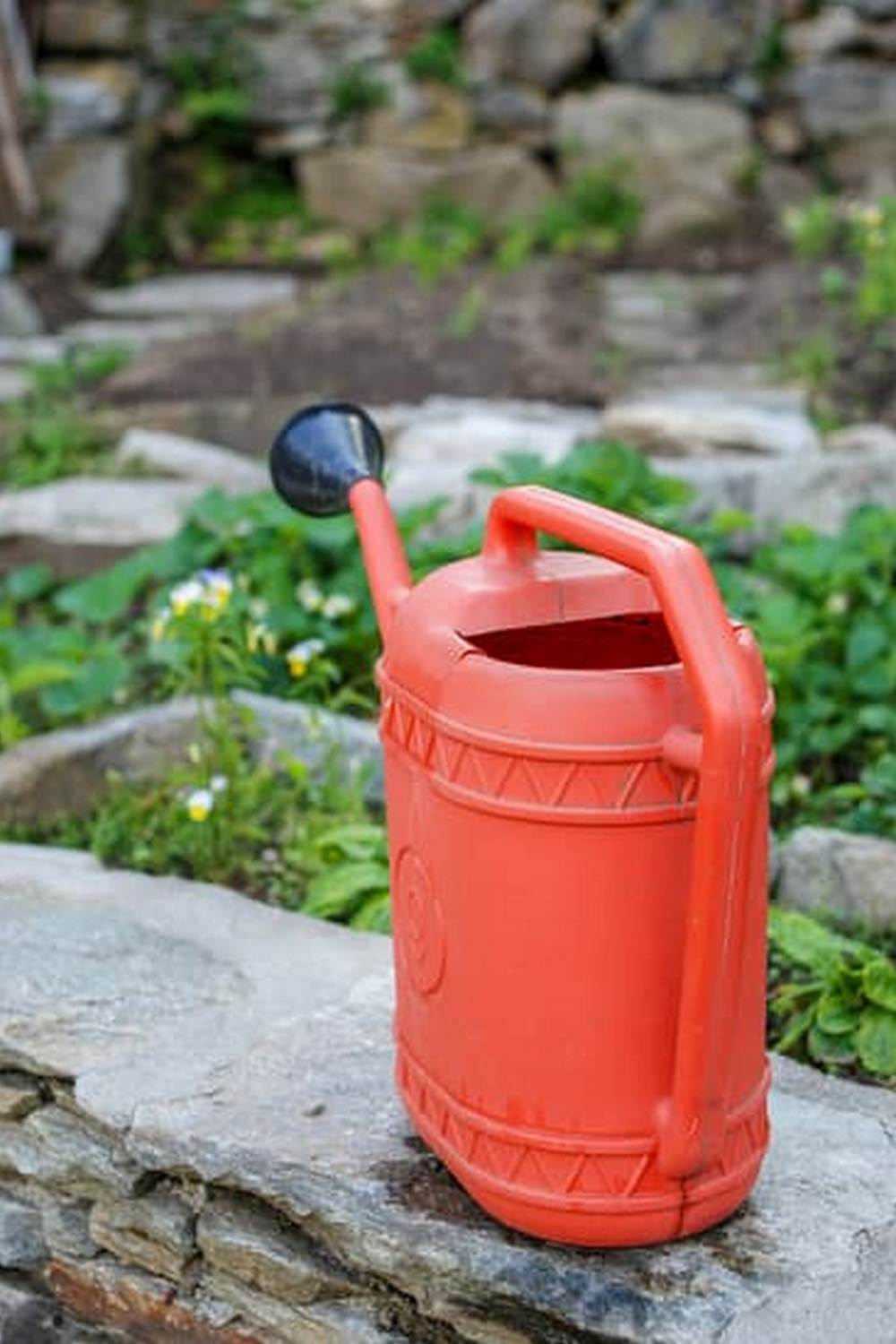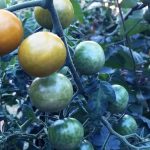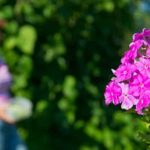Are you looking for an effective way to control weeds in your vegetable garden? Look no further than landscape fabric for vegetable gardens. This article will explore the benefits of using landscape fabric, the types suitable for vegetable gardens, installation and maintenance tips, common mistakes to avoid, case studies of successful vegetable gardens using landscape fabric, and expert tips for choosing the right landscape fabric for your garden.
Using landscape fabric in vegetable gardens offers numerous benefits, including weed suppression, moisture retention, and improved soil structure. In this article, we will delve into these advantages in more detail and explain how they can positively impact the health and productivity of your vegetable plants.
When it comes to choosing the right type of landscape fabric for your vegetable garden, there are various options available. We will discuss the different types of landscape fabric that are suitable for vegetable gardens and provide guidance on selecting the best option based on your specific needs. Whether you are dealing with heavy-duty weeds or looking for a more permeable option, we have got you covered.
Benefits of Using Landscape Fabric in Vegetable Gardens
Improved Weed Control
One of the key benefits of using landscape fabric in vegetable gardens is its ability to effectively control weeds. By creating a barrier between the soil and the air, landscape fabric prevents weed seeds from germinating and growing. This means less time spent on weeding and more time enjoying your thriving vegetable garden.
Moisture Retention
Another advantage of utilizing landscape fabric in vegetable gardens is its role in retaining moisture in the soil. The fabric helps to reduce water evaporation, allowing the soil to stay moist for longer periods of time. This can be especially beneficial during hot, dry seasons or if you live in an area with water restrictions.
Soil Temperature Regulation
Landscape fabric also aids in regulating soil temperature, creating a more stable environment for your vegetable plants to thrive. During cooler months, the fabric helps retain heat in the soil, while in warmer months it can provide some insulation to keep the soil cool. This stability can promote healthier root growth and overall plant development.
With these benefits in mind, it’s clear that landscape fabric can be a valuable addition to any vegetable garden, providing an effective solution for weed control, moisture retention, and soil temperature regulation.
Types of Landscape Fabric Suitable for Vegetable Gardens
When it comes to choosing the right landscape fabric for your vegetable garden, there are several options to consider. Each type of fabric has its own unique characteristics and benefits, so it’s important to select the one that best suits your specific needs. Here are some types of landscape fabric suitable for vegetable gardens:
- Woven Landscape Fabric: Woven landscape fabric is known for its durability and strength. It is made up of woven polypropylene material, which allows water and nutrients to easily pass through to the soil while still effectively blocking out weeds. This type of fabric is ideal for areas with heavy foot traffic or where a lot of weight will be placed on the fabric.
- Non-Woven Landscape Fabric: Non-woven landscape fabric is made from synthetic materials bonded together. It tends to be more lightweight and provides excellent weed control while still allowing air, water, and nutrients to penetrate through to the soil. Non-woven landscape fabric is a popular choice for vegetable gardens due to its versatility and ease of installation.
- Biodegradable Landscape Fabric: For environmentally conscious gardeners, biodegradable landscape fabric is a great option. Made from natural fibers such as jute or hemp, this type of fabric breaks down over time, adding organic matter to the soil as it decomposes. Biodegradable landscape fabric is perfect for sustainable gardening practices and can be used in vegetable gardens with minimal impact on the environment.
Each type of landscape fabric offers its own set of advantages, so it’s important to carefully consider your garden’s specific requirements before making a decision.
Whether woven, non-woven, or biodegradable, all these types of landscape fabrics provide an effective barrier against weeds while allowing air, water, and nutrients to reach the soil. By using high-quality landscape fabric suitable for your vegetable garden’s needs you can enjoy all the benefits without sacrificing the health and growth of your crops.
How to Install Landscape Fabric in a Vegetable Garden
When it comes to installing landscape fabric in a vegetable garden, there are a few important steps to follow to ensure its success. First, begin by preparing the soil in your garden bed. This involves removing any existing weeds or debris and leveling the surface as much as possible. It’s important to start with a clean, even surface to lay the landscape fabric on.
Once the soil is prepared, roll out the landscape fabric over the entire garden bed, ensuring that it covers the entire area without any gaps or overlaps. Use landscaping pins or staples to secure the fabric in place, especially along the edges and around any plants or rows that you want to keep uncovered.
After securing the landscape fabric, make sure to cut holes or slits in the fabric where you want to plant your vegetables. Be mindful of spacing and ensure that each plant has enough room to grow comfortably. Once your vegetables are planted, you can also add a layer of organic mulch on top of the landscape fabric to further suppress weeds and improve moisture retention.
Proper installation of landscape fabric for vegetable gardens is essential for its effectiveness in weed control and moisture retention. By following these steps, you can set up your vegetable garden for success while minimizing maintenance and providing a healthy growing environment for your plants.
Maintenance and Care Tips for Landscape Fabric in Vegetable Gardens
Landscape fabric for vegetable gardens requires proper maintenance and care to ensure its effectiveness in controlling weeds and preserving the health of the garden. Here are some tips to help you maintain and care for landscape fabric in your vegetable garden:
1. Regular Inspection: Periodically check the landscape fabric for any tears, holes, or signs of wear and tear. This will allow you to address any issues promptly before they escalate and compromise the fabric’s performance.
2. Weed Management: While landscape fabric helps prevent weed growth, it is not foolproof. Some weeds may still find their way through the fabric or grow on top of it. Inspect the garden regularly and remove any weeds that manage to penetrate the fabric.
3. Mulching: Apply a layer of organic mulch on top of the landscape fabric to further suppress weed growth and improve moisture retention in the soil. This additional layer also helps protect the fabric from degradation caused by exposure to sunlight.
4. Irrigation: When watering your vegetable garden, pay attention to how water is penetrating the landscape fabric. Make sure that water is reaching the soil beneath the fabric and not just pooling on top. Proper irrigation will help maintain a healthy growing environment for your vegetables.
5. Repair as Needed: If you notice any damage to the landscape fabric, such as punctures or rips, make necessary repairs immediately. Patching up any holes will prolong the lifespan of the fabric and maximize its weed control capabilities.
By following these maintenance and care tips, you can ensure that your landscape fabric continues to provide effective weed control while promoting a healthy growing environment for your vegetables in your garden.
Common Mistakes to Avoid When Using Landscape Fabric in Vegetable Gardens
When using landscape fabric in a vegetable garden, it’s important to be aware of common mistakes that can hinder its effectiveness. One of the most frequent errors is forgetting to secure the fabric properly. Without proper anchoring, the fabric can shift or become loose, allowing weeds to grow through the gaps. To avoid this mistake, make sure to use landscape staples or other anchoring methods to secure the fabric firmly in place.
Another common mistake is not cutting proper-sized holes in the landscape fabric for plant placement. When planting vegetables, it’s essential to cut precise holes in the fabric to allow for optimal growth while still providing weed control. Cutting holes that are too small can constrict plant growth and airflow, while holes that are too large may not effectively suppress weeds. Take your time when cutting holes and ensure they are just the right size for each plant.
Additionally, a mistake many gardeners make when using landscape fabric is neglecting proper maintenance. While landscape fabric significantly reduces weed growth, some weeds may still manage to take root on top of the fabric or within the mulch layer above it. Regular inspections and manual weeding are still necessary to maintain a pristine vegetable garden. Failure to do so can result in an overgrown and unkempt garden despite the use of landscape fabric for weed control.
It’s also important to avoid overlapping pieces of landscape fabric incorrectly. Overlapping multiple pieces without ensuring they are secured and properly aligned can create weak points where weeds can penetrate through. When laying down multiple sections of landscape fabric, always ensure they overlap correctly and are securely attached to prevent any unwanted growth from occurring between them.
Case Studies
Landscape fabric for vegetable gardens has been gaining popularity among gardeners, and for good reason. Many successful vegetable gardens have utilized landscape fabric to great effect, helping to control weeds, retain moisture, and maintain the overall health of the plants.
One case study that demonstrates the effectiveness of landscape fabric is a vegetable garden in Oregon that saw a significant reduction in weed growth after incorporating landscape fabric into their gardening practices. This not only saved the gardeners time and effort in weeding but also resulted in healthier and more productive vegetable plants.
Another example of a successful vegetable garden utilizing landscape fabric is a community garden in New York City. By implementing landscape fabric, the garden was able to maintain a tidy appearance while reducing the need for constant weeding. This allowed the volunteers to focus on other aspects of caring for the garden and engaging with the community, resulting in an overall improvement in the quality of the vegetables grown.
In a study conducted by a horticultural institute, it was found that using landscape fabric in vegetable gardens can lead to higher yields and better plant growth compared to traditional methods of weed control. This is due to the ability of landscape fabric to provide a barrier against competing vegetation while still allowing air and water to penetrate the soil, creating optimal growing conditions for vegetables.
| Case Study Location | Benefits Observed |
|---|---|
| Oregon Vegetable Garden | Significant reduction in weed growth, resulting in healthier and more productive plants. |
| New York City Community Garden | Maintained tidy appearance, reduced need for constant weeding, freeing up time for other gardening tasks. |
| Horticultural Institute Study | Higher yields and better plant growth observed compared to traditional weed control methods. |
Comparison of Landscape Fabric With Other Weed Control Methods for Vegetable Gardens
When it comes to weed control in vegetable gardens, there are various methods that gardeners can utilize. One popular option is landscape fabric, which offers several advantages over other weed control methods. In this section, we will compare landscape fabric with other common weed control methods for vegetable gardens to help you decide which approach is best for your garden.
Comparison With Mulching
One common alternative to landscape fabric for controlling weeds in vegetable gardens is mulching. While both landscape fabric and mulching help prevent weed growth, there are some differences between the two. Mulch is a layer of organic material spread over the soil surface, such as wood chips or straw. It provides insulation to the soil, helps retain moisture, and promotes healthier soil biology. However, unlike landscape fabric, mulch may break down over time and require more frequent replenishment.
Comparison With Chemical Weed Control
Chemical weed control involves the use of herbicides to eliminate unwanted vegetation. While this method can be effective in controlling weeds, it also comes with potential environmental concerns and risks to human health. In contrast, landscape fabric offers a non-toxic and environmentally friendly solution for suppressing weeds in vegetable gardens.
Comparison With Manual Weeding
Another traditional method of weed control in vegetable gardens is manual weeding, which involves physically removing weeds by hand or using garden tools. While manual weeding allows for precision in targeting certain weeds, it can be labor-intensive and time-consuming, especially in larger garden areas. Landscape fabric offers a more efficient long-term solution by reducing the need for constant manual weeding.
Overall, while each weed control method has its own advantages and drawbacks, landscape fabric stands out as a highly effective and low-maintenance option for keeping vegetable gardens free from weeds. By comparing landscape fabric with other methods, you can make an informed decision on how to best manage weed growth in your vegetable garden.
Expert Tips for Choosing the Right Landscape Fabric for Your Vegetable Garden
In conclusion, landscape fabric can be a valuable addition to any vegetable garden, providing numerous benefits such as weed control, moisture retention, and improved soil temperature regulation. When selecting the right landscape fabric for your vegetable garden, it is important to consider factors such as material, thickness, and permeability to ensure optimum performance.
With the plethora of options available in the market, it can be overwhelming to make the right choice. However, by following expert tips and considering your specific needs, you can make an informed decision that will contribute to the success of your vegetable garden.
It is essential to assess the specific requirements of your vegetable garden when choosing landscape fabric. Factors such as the type of vegetables you are growing, local climate conditions, and potential pests should all be taken into consideration. Additionally, seeking advice from experienced gardeners or horticultural experts can provide valuable insights into selecting a landscape fabric that aligns with your specific gardening needs.
Furthermore, conducting thorough research on different types of landscape fabric suitable for vegetable gardens can help you make an informed decision. Consider factors such as UV stability, durability, and ease of installation when comparing various options. By investing time in choosing the right landscape fabric for your vegetable garden, you’ll effectively minimize maintenance efforts while promoting healthy growth and productivity in your garden for years to come.
Frequently Asked Questions
Should I Use Landscape Fabric in a Vegetable Garden?
Using landscape fabric in a vegetable garden can be beneficial as it helps prevent weed growth and conserves soil moisture. However, it is important to choose a breathable fabric to allow air and water to reach the soil.
Can You Put Landscape Fabric Around Tomato Plants?
It is generally not recommended to put landscape fabric directly around tomato plants, as it can restrict root development and affect the plant’s overall health. Instead, consider using organic mulch or straw to control weeds around tomato plants.
Can Plant Roots Grow Through Landscape Fabric?
Plant roots have the ability to grow through landscape fabric, especially if the fabric is not properly installed or maintained. Over time, roots may penetrate the fabric or grow on top of it, potentially causing damage or nutrient deficiencies for the plants.

If you’re looking to get into vegetable gardening, or are just looking for some tips on how to make your current garden better, then you’ve come to the right place! My name is Ethel and I have been gardening for years. In this blog, I’m going to share with you some of my best tips on how to create a successful vegetable garden.





